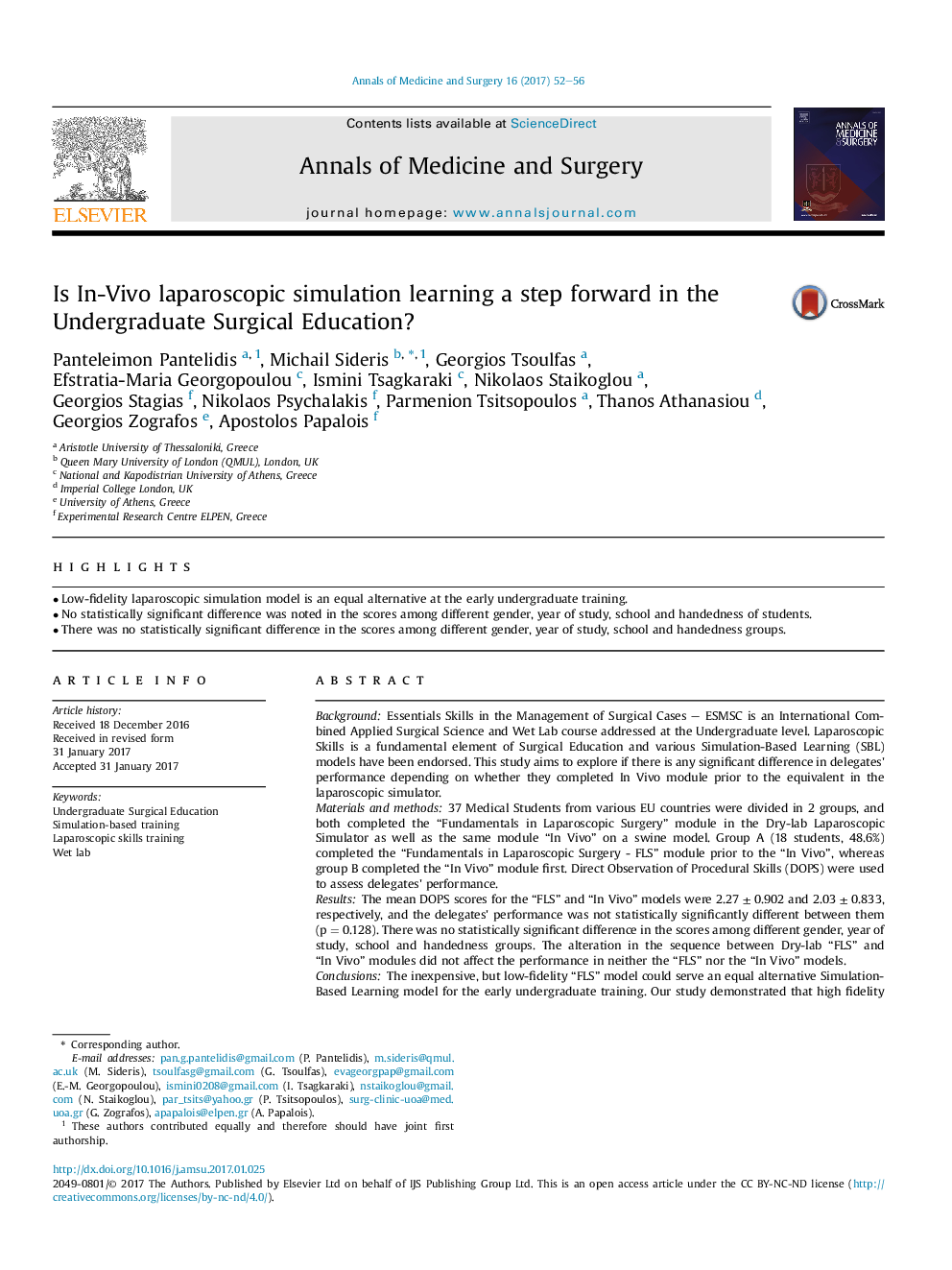| کد مقاله | کد نشریه | سال انتشار | مقاله انگلیسی | نسخه تمام متن |
|---|---|---|---|---|
| 5723093 | 1608911 | 2017 | 5 صفحه PDF | دانلود رایگان |

- Low-fidelity laparoscopic simulation model is an equal alternative at the early undergraduate training.
- No statistically significant difference was noted in the scores among different gender, year of study, school and handedness of students.
- There was no statistically significant difference in the scores among different gender, year of study, school and handedness groups.
BackgroundEssentials Skills in the Management of Surgical Cases - ESMSC is an International Combined Applied Surgical Science and Wet Lab course addressed at the Undergraduate level. Laparoscopic Skills is a fundamental element of Surgical Education and various Simulation-Based Learning (SBL) models have been endorsed. This study aims to explore if there is any significant difference in delegates' performance depending on whether they completed In Vivo module prior to the equivalent in the laparoscopic simulator.Materials and methods37 Medical Students from various EU countries were divided in 2 groups, and both completed the “Fundamentals in Laparoscopic Surgery” module in the Dry-lab Laparoscopic Simulator as well as the same module “In Vivo” on a swine model. Group A (18 students, 48.6%) completed the “Fundamentals in Laparoscopic Surgery - FLS” module prior to the “In Vivo”, whereas group B completed the “In Vivo” module first. Direct Observation of Procedural Skills (DOPS) were used to assess delegates' performance.ResultsThe mean DOPS scores for the “FLS” and “In Vivo” models were 2.27 ± 0.902 and 2.03 ± 0.833, respectively, and the delegates' performance was not statistically significantly different between them (p = 0.128). There was no statistically significant difference in the scores among different gender, year of study, school and handedness groups. The alteration in the sequence between Dry-lab “FLS” and “In Vivo” modules did not affect the performance in neither the “FLS” nor the “In Vivo” models.ConclusionsThe inexpensive, but low-fidelity “FLS” model could serve an equal alternative Simulation-Based Learning model for the early undergraduate training. Our study demonstrated that high fidelity In Vivo simulation for laparoscopic skills does not affect significantly the improvement in the delegates' performance at the undergraduate level. Further studies should be conducted to identify at which stage of training should high fidelity simulation be introduced.
Journal: Annals of Medicine and Surgery - Volume 16, April 2017, Pages 52-56